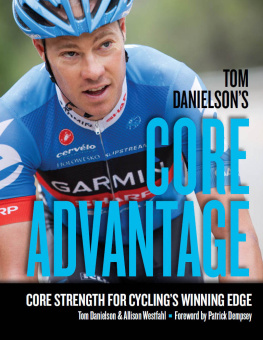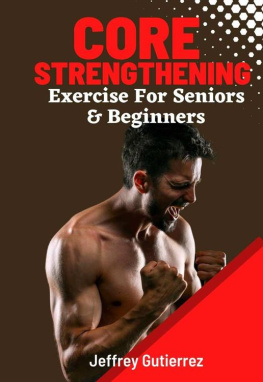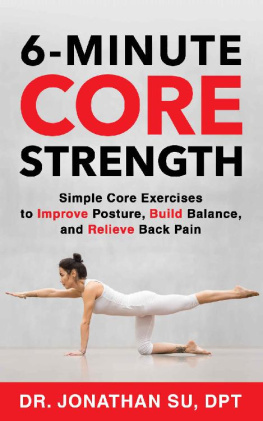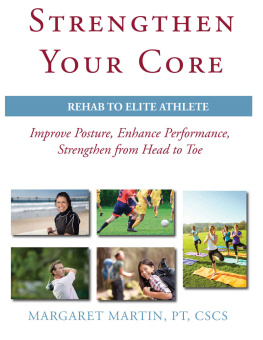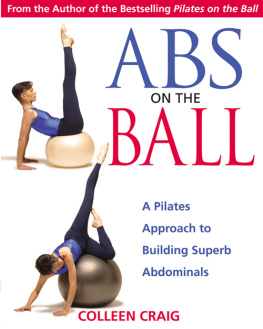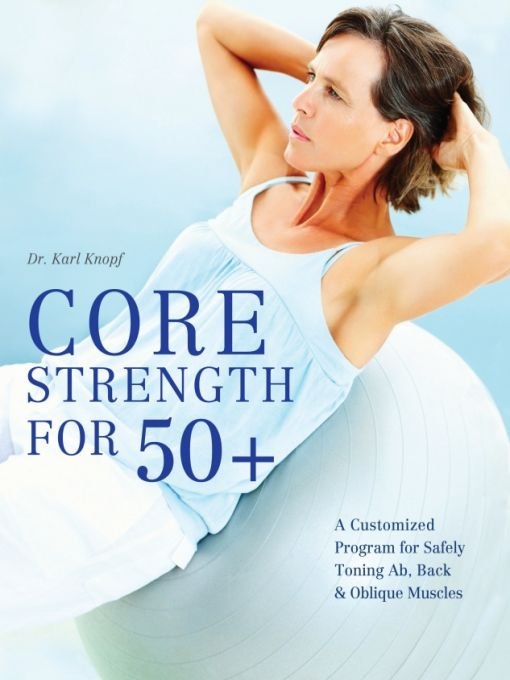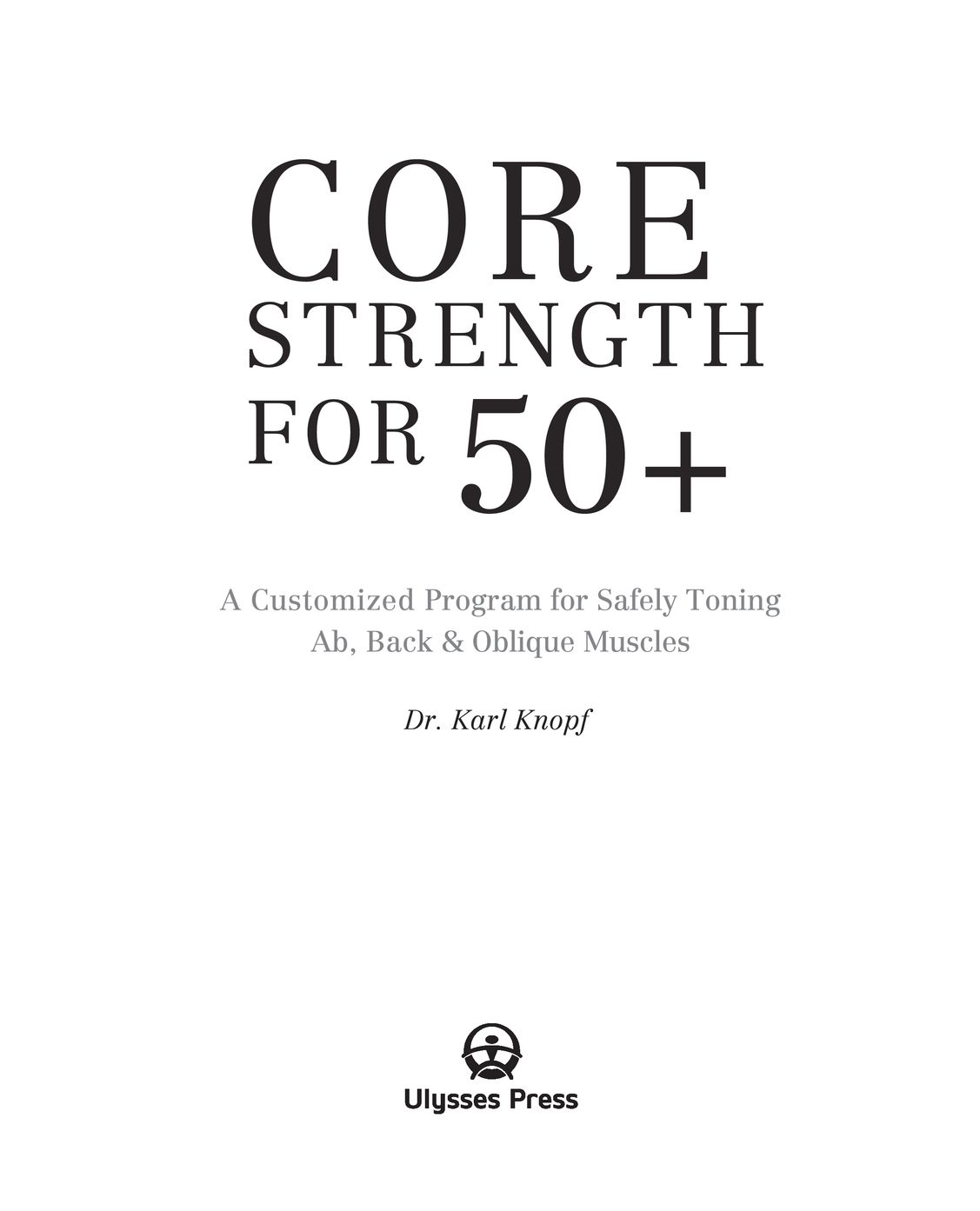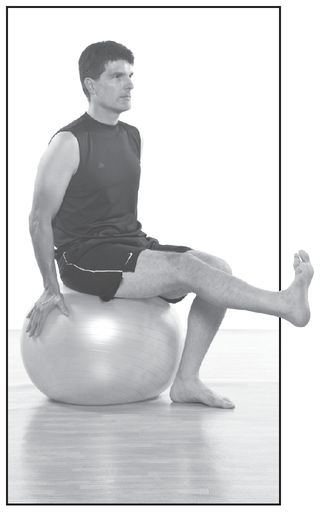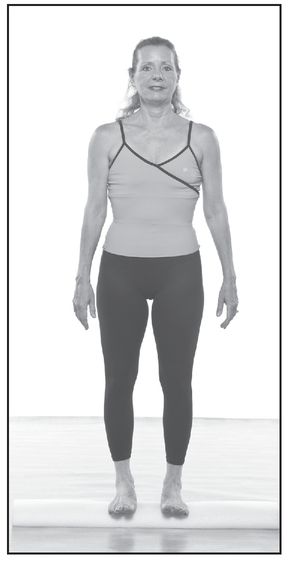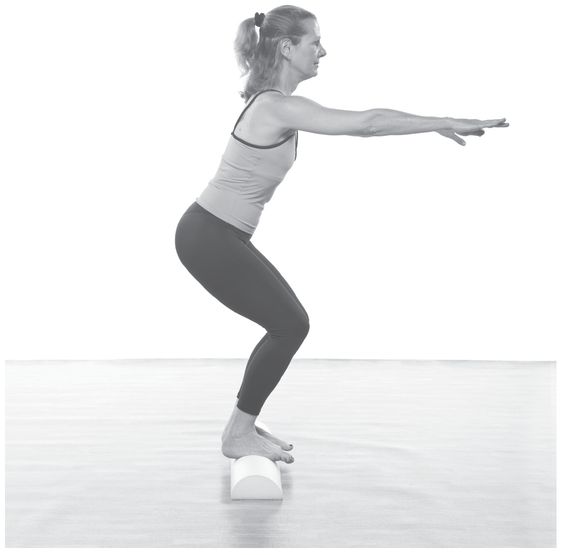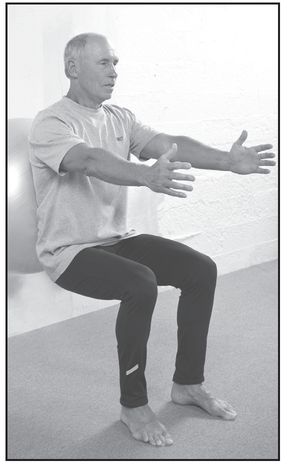Table of Contents
part 1
overview
Introduction
The core is the powerhouse of the body. When the concept of core strength training was first introduced, the core was considered to be only the abdominal region and the low back area. Nowadays, some experts consider the core to be the region from the tops of the legs to the shoulder area. With its roots in back rehabilitation, core training was later thought to be useful in sports performance. Today, core training needs to be a part of everyday exercise programs.
Having an aligned and strong yet flexible core can take the load off the vertebral column and discs, which results in improved function and less discomfort and pain. Itll also assist you in activities of daily living, help improve posture, and maybe even boost appearance and foster athletic performance.
Consider a tower of blocks: If the blocks arent lined up properly and a load is placed on top of it, the middle portion often buckles and collapses. This is also what happens when we dont have a solid core. Some experts maintain that true core strength is the interaction of the total body. Its about improving functional fitness and reducing the strain on the spinal region. Core strengthening goes far beyond just having a flat stomach and six-pack abs.
Core Strength for 50+ is very different from other core training books because it focuses on providing comprehensive, total-body core-strengthening options. The exercises described in this book are based on the most recent scientific knowledge of how the spine responds to corrective exercise. Any exercise that doesnt have superior benefits and minimal risks was not included. Additionally, some traditional core exercises were transformed a bit to accommodate balance and joint issues often seen in the 50-plus person. By using Core Strength for 50+, youre well on your way to enhancing your spines stability and re-educating correct muscle activation patterns.
What is core strength?
Fitness fads come and go but core-strength training is not a passing trend. Core strength is not achieved by just doing a bunch of sit-ups; in addition, using heavy resistance is counterproductive. Rather, core strength is an integrated approach of systematic conditioning and correcting of muscular imbalances.
Too often people exercise their abdominals (or abs) for aesthetic reasons, but correct core strength is gained through proper activation of specific muscles in a coordinated fashion. Proper core training teaches you to engage and protect your back even when youre not even thinking about your core. Youll know you mastered core training if you automatically engage your core muscles when you open a door, swing a golf club, get up from sitting, or lift something.
The roots of core training stem from sound back rehabilitation. The average fitness follower or anyone who has ever had a bad back is familiar with the terms core stability and core training. Core training is also known as dynamic lumbar stabilization.
Core training became very common in the early 1980s and received the most acclaim when used by San Francisco 49er quarterback Joe Montana. The belief was that stabilization of the lumbar region would guard your low back by using your own body to build your own lumbar support. Patients were taught how to find the most balanced, pain-free position while in a static position and then progress to being able to locate that position in a variety of dynamic movements. This approach was so successful with clients who had intervertebral disc problems as well as facet joint involvement and other muscular imbalance issues that it was incorporated into fitness and sports conditioning routines for the young and old.
Core Strength vs. Core Stabilization
Core training goes by many names, such as core stabilization and core strengthening, to name the most common ones. They all generally agree that the abdominal and low back muscles must have the right amount of strength, endurance, and flexibility, as well as the muscle memory of knowing automatically when and how to engage and relax the core set of muscles. However, people often overlook the muscular balance thats required for a strong core, and only do sit-ups and back extensions without addressing all the subtle changes of posture and deep-lying muscles. This may lead to physical problems down the line. When strengthening your core, be sure to train both the superficial and deep-lying muscles in the front, back, and sides of the body. Your body needs a combination of muscular endurance to handle prolonged sitting and standing, and enough strength in that region to keep your posture long and tall.
Where is the core?
The core of anything is the central foundation of the structure, whether its the core of an apple or the core of a nuclear reactor. Although no one universal definition of core exists, most people refer to the abdominal wall muscles in the front of the body and the muscles of the back that run up and down the spine as the core of the human body. Sometimes the gluteal region gets included.
The core is a complicated arrangement of bones, nerves, ligaments, tendons, and supporting muscle configurations. Understanding the locations and roles of the muscles that comprise the core will motivate you to keep participating in a core-strengthening routine day in and day out.
The core team is made up of a pole (the vertebral column) and guide wires (the muscles), and each member of your core team has a specific role. The core muscle group includes the transverse abdominis, internal and external obliques, rectus abdominis, and erector spinae.
The transverse abdominis is the deepest-lying layer of fibers of the abdominal wall. The transverse abdominis provides compression to the internal organs and serves as natures back brace. Some physical therapists believe that the transverse abdominis is the most important element of core training.
The internal and external obliques are the muscles on the sides of the body. Theyre engaged when you twist to reach and grab something.
The rectus abdominis is the muscle that flexes the vertebral column. Were most familiar with this muscle because it gives us the six pack. It also helps stabilize the pelvis when walking.
The erector spinae group is responsible for extending the back. Its made up of three distinct muscles: the iliocostalis, the longissimus, and the spinalis. The erectors add stability to the trunk area and are also the primary muscles that help us stand erect.


